Durchsuchen Sie die Webergebnisse zu dieser Domain.

Plants can do wonders for your health, from reviving a space and increasing oxygen to boosting your overall wellbeing. See the best indoor plants for health.
These low-maintenance houseplants are perfect for the beginner plant parent.Philodendron plants prefer indirect light and can grow in average home temperatures, making them easy to care for. There are plenty of different kinds of philodendron plants to choose from, including birkin philodendrons, heartleaf philodendrons, imperial green philodendron and more.Handling soil, which contains microbes, can promote microbiome diversity in your home, which could benefit gut and skin health. But, having houseplants alone isn’t a recommended treatment for any medical condition, Rothenberg adds. “Encouraging my patients to consider having houseplants is one part of a broader, individualized health care plan.” · Research shows that plants can help with air purification, especially in areas where air quality may be in question.Erica Sweeney is a writer who mostly covers health, wellness and careers. She has written for The New York Times, HuffPost, Teen Vogue, Parade, Money, Business Insider and many more. ... Laura Millar (she/her) is the assistant editor for Good Housekeeping, where she covers home design.

For more ideas to create privacy ... Guide to Planting, Care & Design. Read more: ... N.B.: This post is an update; it was first published May 2018. ... You need to login or register to view and manage your bookmarks. ... When you register as a free Member of the Remodelista family of websites (Remodelista, Gardenista, and The Organized Home), you gain ...
For more ideas to create privacy in a garden, see our curated guides to Garden Design 101, including Fences & Gates and Shrubs: A Field Guide to Planting, Care & Design. Read more: ... N.B.: This post is an update; it was first published May 2018. ... You need to login or register to view and manage your bookmarks. ... When you register as a free Member of the Remodelista family of websites (Remodelista, Gardenista, and The Organized Home), you gain access to all current posts plus 10 archived posts per month, our internal bookmarking tool, and the community bulletin board.We asked Brooklyn-based landscape designer Susan Welti, of Foras Studio, for her ideas on how to create privacy in a small city backyard.Hanging an awning over your entire backyard or planting a tree big enough to screen everything isn’t a good option, since usually, getting the light you need to grow things is already a challenge. So what are the best ways to make a small urban garden feel more private—or at least to create the illusion of privacy? For advice, we asked landscape designer Susan Welti, a partner in the Brooklyn-based Foras Studio.Photograph by Dan Wonderly, courtesy of Kim Hoyt Architects. For more of this garden, see Landscape Architect Visit: A Leafy Garden in Park Slope in Brooklyn.
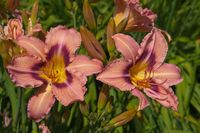
These low-maintenance outdoor plants are hardy and even the toughest garden spaces can't kill them. They can survive harsh weather, poor soil, and drought.
Arborvitae is commonly used to mark borders, privacy screens, hedges, and landscaping. In spring, it produces tiny, inconspicuous flowers. ... Mature Size: 10-40 ft. tall and 3-15 ft. wide ... Coral bells are adaptable, and they'll grow easily whether you plant them in a rock garden, container, border, or as a ground cover.Gardeners who make room for a Buddleia in the landscape will soon discover that its purple, pink, blue, white, and yellow flowers are a one-stop buffet for many butterfly species. The long flower panicles comprise many individual blooms, each with a rich store of nectar. This is why you will observe happy butterflies lingering over and around the shrub for long periods on warm, sunny days. Plant a butterfly bush in full sun in average soil, and cut plants back in early spring to encourage healthy branching.The daffodil is one of those plants that you can casually scatter here and there in the landscape, and then you will look like a garden genius forever after each spring as your flowers multiply.She has more than 20 years of experience caring for flowers and plants. She was a feature writer for Organic Gardening at Suite101, where she won awards for her writing. ... Mary Marlowe Leverette is one of the industry's most highly-regarded housekeeping and fabric care experts, sharing her knowledge on efficient housekeeping, laundry, and textile conservation.
Many homeowners desire a beautiful landscape but are often discouraged by the lack of time and money needed to create and care for the garden of their dreams. A pleasing, low-care, low-cost landscape is possible, however, with careful planning, appropriate plant choices, and thoughtful design.
Low garden fences or walls can effectively hide areas where plants are difficult to grow or where utilities are located. Use large rocks, stone pathways, garden structures, and dry stream beds to cover bare spots. Homeowners can use some or all of these ideas to create a low-cost, low-care garden. Figure 21 illustrates the layout of a typical yard that incorporates many of the ideas throughout the landscape.Carefully select larger ornaments appropriate for the design theme and avoid scattering many small, unrelated ornaments around the yard. Figure 14. A large garden ornament provides support for vining plants. 16. Select outdoor furniture with color and texture. Include rugs, curtains, and pillows to make a patio or porch more interesting and inviting (Figure 15). The patio furniture can set the style theme for the landscape and show your personal style and color preferences.Containers with large foliage plants are low-care and attractive. 15. Use garden ornaments. Elements other than plants add color and texture to the garden, and maintenance usually requires no more than an annual cleaning. Most ornaments also serve a functional purpose as well, such as providing support for plants or homes for wildlife (Figure 14).University of Florida, Institute of Food and Agricultural Sciences Extension outreach is a partnership between state, federal, and county governments to provide scientific knowledge and expertise to the public. The University of Florida (UF), together with Florida A&M University (FAMU), administers the Florida Cooperative Extension Service.
These hardy outdoor plants won't just boost your home's curb appeal, but they'll survive every condition, even a dry, sandy, or shady yard.
With expert advice and care tips from a couple of plant pros, we've id'd some pretty plants that will thrive in even the least plant-friendly spaces. These hard-to-kill plants are often readily available at nurseries and garden centers, so there's no reason to let a dry, low-light space stop you from creating a showstopping backyard. 5 Low-Maintenance Outdoor Plants That Will Boost Your Home's Curb AppealThis free-growing ground cover is similar to a soft carpet for your garden. Once planted, it will spread out over the yard, filling in any open areas without choking out the plants that already live there. "It adds a softer texture and will spread out and mingle with the other plants," Burns explains, so you won't have to worry too much about it. Pair this shady plant with a flowering, low-light pick, such as hellebore, that will bring a pop of color to the lush green landscape.If you're dealing with a backyard that's both shady and dry, the hosta is one of the few plants that will be happy to call it home. Growing to about 16 inches tall and 30 inches wide, a group of hostas can help fill the space in a low-light garden. In fact, most hostas prefer some shade, and the darker the plant, the more likely it is to thrive in a dim environment.Whether planting in the backyard or designing an indoor container backyard, pair this flowering plant with cacti or more classic spiky succulents for a desert-inspired garden that will survive even the hottest summer. Plant desert rose as an annual in the north, or treat it as perennial in frost-free regions. 13 Drought-Tolerant Plants That Will Improve Your Home's Curb Appeal
:max_bytes(150000):strip_icc()/impossible-to-kill-outdoor-plants-1-2000-f513b0574cb04674a1bce40b832b28dd.jpg)
Formed in 1993, this nonprofit ... landscape professionals, botanical garden professionals, and faculty from the University of Georgia. The all-volunteer committee is committed to promoting the use of plants that are proven performers in Georgia. They look at six categories to select Georgia Gold Medal Plants: annuals, perennials, shrubs, trees, vines or groundcovers, and native plants. This invaluable tool for home gardeners ...
Formed in 1993, this nonprofit is comprised of nurserymen, flower growers, garden center retailers, landscape professionals, botanical garden professionals, and faculty from the University of Georgia. The all-volunteer committee is committed to promoting the use of plants that are proven performers in Georgia. They look at six categories to select Georgia Gold Medal Plants: annuals, perennials, shrubs, trees, vines or groundcovers, and native plants. This invaluable tool for home gardeners takes the guesswork out of buying plants.Take the guesswork out of choosing landscape plants for your Georgia garden. Peruse these proven performers for all the planting inspiration you need.Peggy Anne Montgomery has 35 years of experience in horticulture in the Netherlands and the U.S. She owned a landscape design firm in the Netherlands. Upon returning to the United States she worked in sales and marketing for Bailey Nurseries, Inc, followed by a position at Mt. Cuba Center in Delaware, studying native plants. Later, she began a consulting firm and represented American Beauties Native Plants before taking on the role of Executive Account Manager at the Garden Media Group.Plant in full to part sun in moist, acidic soil, and make sure the tree will be protected from winter wind and sun in northern areas. 'Yoshino' Japanese cedar (Cryptomeria japonica) - Zones 5-9 · Only recently did Japanese cedars gain wide acceptance in North American gardens, once new cultivars became available. 'Yoshino' grows 20 to 30 feet tall, but only 5 to 6 feet wide, bringing a strong vertical component to the landscape.
:strip_icc()/101404301-2bd8c07fbf334420a83e2f87d6cb7031.jpg)

Keep your front yard welcoming with these fuss-free landscaping plants that are compact, deer-resistant, need little pruning, and won't swallow your house.
Flaunting showy blue flowers in spring, 'Chef's Choice' also boasts a high oil content in its needles—very welcome in the kitchen. In the garden or in a container, this tidy, carefree evergreen forms a mound about 12 inches high and 18 inches wide. Deer hate it.Steve Bender, also known as The Grumpy Gardener, is an award-winning author, editor, columnist, and speaker with nearly 40 years experience as Garden Editor, Senior Writer, and Editor-at-Large for Southern Living. ... One of the most common requests we receive from readers is for a list of well-behaved bushes they can plant in front of the house that won't eventually swallow it.Unlike other forms of pittosporum that get huge, 'Mojo' reaches only 3 feet tall and wide—perfect for planting under windows. It combines handsome, variegated foliage with sweetly fragrant spring flowers. Give it sun and well-drained soil. Deer turn up their noses at it. Grow it in USDA Zones 7 to 10. ... Why run out to the herb garden for a sprig of rosemary for cooking when you can clip one or two at the foot of your front steps?They're compact growers, need little pruning, aren't fussy to grow, won't overtake your house, and deer won't eat them. Second, they all belong to our Southern Living Plant Collection. Read more about these great fuss-free landscaping plants for the front yard, and click on each link to find local retailers in your area that carry them.

Select the mulch that works best ... in the garden. Once you’ve created your landscaping design, it’s essential to maintain it. Regular maintenance ensures that your plants and materials remain healthy and beautiful. Maintenance includes watering, fertilizing, pruning, and cleaning. Schedule regular checkups to ensure that your outdoor space continues to thrive. Lawn care and landscaping ...
Select the mulch that works best with the materials you have already used in the garden. Once you’ve created your landscaping design, it’s essential to maintain it. Regular maintenance ensures that your plants and materials remain healthy and beautiful. Maintenance includes watering, fertilizing, pruning, and cleaning. Schedule regular checkups to ensure that your outdoor space continues to thrive. Lawn care and landscaping are ongoing projects.Mastering lawn care and landscaping provides an immense sense of pride and achievement for homeowners and gardeners. Aesthetically, you will create a welcoming curb appeal for visitors and an enjoyable outdoor atmosphere for family and friends. Like everything in life, achieving this beauty will require effort and dedication.Achieve a beautiful, lush green lawn and stunning landscaping by following best practices for lawn care and landscaping.Lighting can be used to highlight specific areas of your design, such as plants or hardscapes. Focal points are the areas of your landscape design that draw the eye and create visual interest. A focal point can be a tree, arch, water feature, statue, or other any item that draws the eye. Consider how the focal point will work with the other elements in your design. A well-placed focal point can add depth and interest to your outdoor space. Pathways are an essential element of lawn care and landscaping.
Shop Outdoor Plants and more at The Home Depot. We offer free delivery, in-store and curbside pick-up for most items.
Home · /Outdoors · /Garden Center · /Outdoor Plants · Shop All Outdoor Plants · Perennials · Annuals · Bushes · Trees · Ground Cover Plants · Succulents · Edible Garden · Vegetable Plants · Fruit Trees · Fruit Plants · Herb Plants · Ornamental Grasses · Rose Bushes · Bonsai Trees · Indoor Plants · Pots & Planters · Hanging Baskets · Grow a Lush Landscape of Beneficial Plants & MoreShop Now ·Specials & Offers Appliances Bath Blinds & Window Treatments Building Materials Lumber & Composites Cleaning Home Décor Lighting Doors & Windows Electrical Flooring Hardware Heating, Venting & Cooling Kitchen Garden Center Outdoors Paint Plumbing Holiday Decorations Smart Home Storage & Organization Tools Automotive Furniture Home Depot Gift Cards Credit Card Services Home Services Home Depot Rental Pro Services & Contractor Supply Project Calculators DIY Projects and Ideas Local Ad Store Finder Site Map
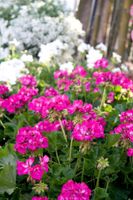
These outdoor plants are easy to grow and nurture into a beautiful, thriving landscape regardless of gardening experience and skill level.
Caladium is a great plant for shady backyards, especially for gardeners who love variegated foliage. With red, pink, and white varieties, the annual adds plenty of visual interest to the landscape while effortlessly coordinating with the blooms of other plants in the garden.The creeping types grow in rock gardens and burrow through cracks in walls, and most varieties are good for planters, too. Once these perennials are planted, they require little care—water sedums if they look dry and cut back plants after flowering to maintain their shape.If you're looking for outdoor plants to attract butterflies, choose pentas. The clusters of star-shaped blooms come in shades of pink, red, and white. Plant this annual in your garden or containers—they'll thrive either way. This Easy-Care Butterfly Garden Plan Will Attract Tons of PollinatorsWith delicate purple-blue flowers, the plant adds a beautiful pop of color to any garden plot or planter. It does not like direct sunlight, so be sure to site it in a cool and shaded spot in your yard. Light Up a Shady Spot with This Easy-Care Summer Shade Garden Plan
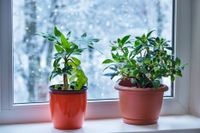
Winter is known as the quiet season ... outdoor plants aren't doing much. It's the same for your indoor garden. Of course, your houseplants don't have to endure snow and chilly winds whipping across the landscape. Yet, growing conditions in your home do change in several subtle ways during the colder, darker months of the year. You'll need to adjust how you care for your ...
Winter is known as the quiet season in the garden because most outdoor plants aren't doing much. It's the same for your indoor garden. Of course, your houseplants don't have to endure snow and chilly winds whipping across the landscape. Yet, growing conditions in your home do change in several subtle ways during the colder, darker months of the year. You'll need to adjust how you care for your houseplants in winter to keep them healthy and thriving.A few simple changes in care routine will help your houseplants winter well so you can enjoy your indoor jungle while the snow flies.Keep your indoor garden thriving through the colder, darker, and drier months. ... Megan Hughes has a passion for plants that drives her to stay on top of the latest garden advancements and time-tested ways of growing great plants. She travels regularly to learn about new plants and technology and is closely connected to the innovation side of the horticulture industry.Another easy method to increase humidity is to place plants on trays filled with pebbles and water. The bottoms of the pots should be above the water level to avoid root rot. As the water evaporates, it creates a more humid microclimate for your houseplants. Test Garden Tip: Misting plants is not an effective way to increase humidity.

These are the 45 best indoor plants to enhance your home with personality and color. They're perfect for any lighting condition and experience level.
Bay laurels are famous for being very low maintenance in their care routines and love a pot just as much as they do the ground. Plus, imagine being able to pluck your very own bay leaves right from the source! ... A beautiful seasonal option for those looking to incorporate holiday plants into their collection, the wintergreen berry plant is ideal for novice gardeners.Named for its hole-filled leaves that resemble a slice of Swiss cheese, this indoor plant develops large, glossy leaves with the right care routine. The best environment for it is in bright, indirect sunlight with weekly watering. ... Paris Lalicata has been with The Sill for almost five years and heads up Plant Education and Community. Paris is a self-taught plant expert with over 10 years of experience growing houseplants. Currently, she maintains an indoor garden of over 200 plants in the northeast.Adding a few indoor plants to your existing windowsill garden is one of the quickest ways to infuse your home with personality, color, and feng shui vibes.Air-purifying plants help keep the atmosphere fresh, and simply being around plants can reduce anxiety and stress. You also don't need to be a gardening expert to maintain the best indoor plants. Many low-maintenance plants, such as succulents or pothos, suit various light conditions.

Having a green corner in your home will provide you with immense pleasure and happiness. Plants always help people to distress and unwind.
Learn how to keep your plants healthy! Even if you’re a beginner at gardening, it’s easy to maintain and take care of house plants with these tips.The smell of freshly cut vegetables, refreshing wind flowing through your hair, the beautiful sight of blooming plants, you get all that and more when you have a garden at home. But watching your plants dying can be an ugly sight. Thankfully, there are certain tips and tricks that you can use to keep your plants healthy and thriving. If you’re a plant parent, then these tips and tricks will help you in taking care of your plants.A little bit of attention and care will go a long way! Plant parenting can be a bit tricky at times, check on your greens regularly to ensure their health. Grab high-quality seeds from AllThatGrows and start exercising your green thumb. Happy Gardening!Sourcing the right seeds becomes the most important part of your gardening journey - it can make or break your garden. You can buy seeds online in India from AllThatGrows. Choosing the right size pot for your plants will help them grow well. A big-sized plant in a small container can never grow well. The roots of the plants will get pot-bound and the soil will dry too quickly. When the roots start coming out of the drainage holes and the plant starts overgrowing the pot, it’s time to find a new home for it.
But while a garden definitely boosts your home’s curb appeal, it also claims a lot of your free time. There’s no such thing as a maintenance-free garden, but choosing smarter plantings does cut down on the amount of pruning and watering required. So, the next time you plant, try some of these lovely options that take care of themselves. Then get ready to enjoy your new low maintenance landscaping...
But while a garden definitely boosts your home’s curb appeal, it also claims a lot of your free time. There’s no such thing as a maintenance-free garden, but choosing smarter plantings does cut down on the amount of pruning and watering required. So, the next time you plant, try some of these lovely options that take care of themselves. Then get ready to enjoy your new low maintenance landscaping—from the comfort of your porch swing.These succulents come in every color from bluish-gray to reddish-bronze, and can find a home in most any garden. Available on Etsy; $4.95. ... Seeking a hardy plant that can survive on the shady side of the house or on a slope with acidic soil? These and other unfavorable conditions pose no problem for pachysandra, a ground cover that can thrive even in shade or poor soil. New plantings can be pinched back every year to encourage spreading, but well-established plants need almost zero care.Available at The Home Depot; $14.92. Related: 15 Good-Looking Ornamental Grasses to Spruce up Your Outdoors ... Even if you don’t have the magic touch of a green thumb, all hope isn’t lost for an attractive yard. These easy-care plants are a good start, but also consider these gardening gadgets that do some of the work for you.Their tolerance for drought coupled with their ability to adapt to almost any soil type makes for easy care. Yews thrive in partial to full sun in Zones 4 to 8 and reward you with beautiful (but inedible) fruits in early autumn. Available at The Home Depot; $30.97. ... There’s a reason you see this shrub in many corporate landscaping schemes: Barberry is extremely low maintenance, yet it stuns with seasonal color. Ideal for foundation plantings or hedges, barberry can tolerate many soil types.
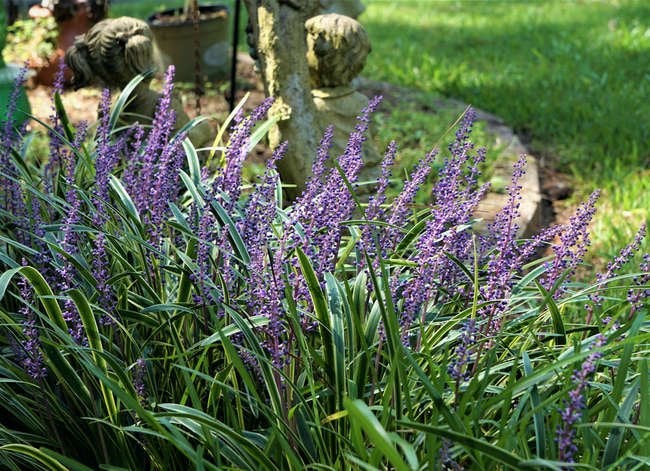
From liriope to sedge to spirea, here are the best low-maintenance plants to grow in your yard.
Garden beds aren’t the only parts of your landscape design that can be low maintenance. Replace traditional turfgrass with fescue, and mowing will only be necessary about every two weeks. You can also use fescue as an ornamental grass to set off colorful bloomers. This plant grows in clumps and doesn’t need much water; fertilize once every fall.Their yellow, orange, purple, white, red, or multicolored petals add beauty to summer gardens. You also can use them as edging plants for pathways. Coreopsis grows best in full sun and a variety of soil types. Prune them in late summer and deadhead as necessary to encourage re-blooming. Hours upon hours of yard work isn’t an essential ingredient to cultivating a landscape design you can enjoy.Round up these plants to help make your DIY backyard goals come to life. ... Creeping sedum, which is able to grow in part shade and part sun, in sandy and rocky soil, works best as groundcover in rock gardens or as added texture between stone pavers. These drought-resistant succulents need little care and attract pollinators, such as hummingbirds and butterflies.She especially enjoys sharing her knowledge of landscaping and pest management to help others create the outdoor spaces of their dreams. ... As seen in Forbes, CNBC and USA Today, LawnStarter makes it easy to schedule service with a local lawn care professional.
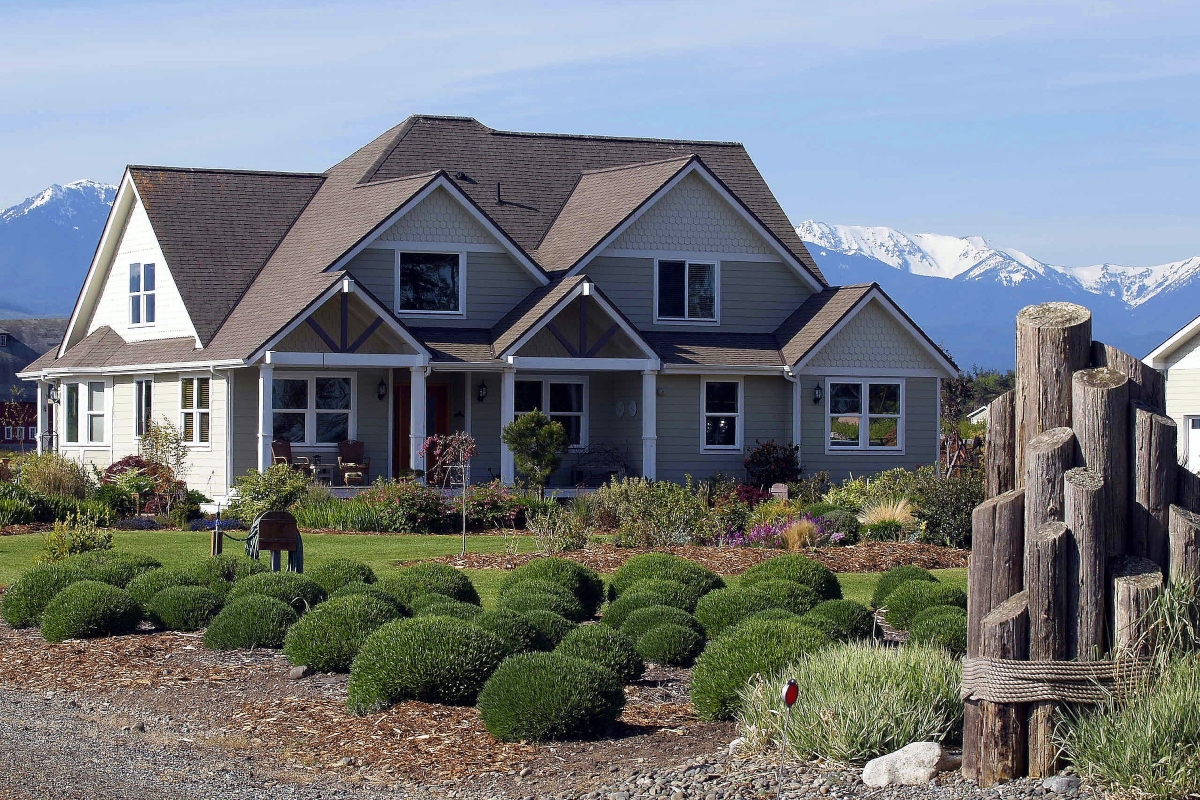
She is also a Master Gardener with over 40+ years of experience and 20+ years of writing experience. Mary is also a member of The Spruce Gardening and Plant Care Review Board. ... Your front yard landscape is the welcome mat for your home, which is why it's essential to select plants that ...
She is also a Master Gardener with over 40+ years of experience and 20+ years of writing experience. Mary is also a member of The Spruce Gardening and Plant Care Review Board. ... Your front yard landscape is the welcome mat for your home, which is why it's essential to select plants that complement your home, thrive in your climate, and suit your soil type.Your front yard landscape welcomes others into your home. Learn about 35 easy-to-grow, low-maintenance plants for your front, side, or back yards.Most of us appreciate easy-to-grow, low-maintenance plants whether they are annuals, perennials, shrubs, or grasses, and this is another important factor to consider for landscaping plants. Here's a roundup of 35 plants that are perfect for your front, side, or back yards. Want more gardening tips? Sign up for our free gardening newsletter for our best-growing tips, troubleshooting hacks, and more! ... Boxwoods are commonly found in foundation plantings or hedges.If you like the idea of producing fruit in your landscape, blueberry bushes are an easy-to-grow shrub for hedges or specimen plants. Look for a species that fits your garden plan because they can range from one to eight feet tall and two to 10 feet wide.
:max_bytes(150000):strip_icc()/color-theory-in-landscape-design-2132147-hero-0d7ccdda1d3346b98594cd26154d7610.jpg)
One of the criteria we test for ... well for home gardeners, with ease. You can be confident that these low-maintenance plants will surpass your expectations, without much help from you. ... Deciding which of these characteristics are most important to you will help you narrow down your plant choices. ... Explore our Pinterest board of National Plants of the Year. Watch this video featuring Hosta of the Year - ‘Coast to Coast’. Learn more about easy care landscaping with low-growing ...
One of the criteria we test for is if the plant will perform well for home gardeners, with ease. You can be confident that these low-maintenance plants will surpass your expectations, without much help from you. ... Deciding which of these characteristics are most important to you will help you narrow down your plant choices. ... Explore our Pinterest board of National Plants of the Year. Watch this video featuring Hosta of the Year - ‘Coast to Coast’. Learn more about easy care landscaping with low-growing shrubs.Discover 23 great landscape plants for your low-maintenance garden. Includes euphorbia, Russian sage, hosta, switch grass, dianthus flowers and more!Find plants you love and create idea boards for all your projects.
When it comes to landscaping, you want plants that won't always keep you busy watering, fertilizing and pruning. Trees, shrubs and flowers grow and change, of course, but some take more work than others. The good news: Many low-maintenance plants will meet your needs, whether you're looking for shade, flowers for cutting, a wildlife-friendly garden, a hedge or a screen. Check out our list of our favorite, easy-care ...
When it comes to landscaping, you want plants that won't always keep you busy watering, fertilizing and pruning. Trees, shrubs and flowers grow and change, of course, but some take more work than others. The good news: Many low-maintenance plants will meet your needs, whether you're looking for shade, flowers for cutting, a wildlife-friendly garden, a hedge or a screen. Check out our list of our favorite, easy-care landscaping plants.Barberry (Berberis thunbergii) is deer resistant and deciduous, with thorny stems that make it a good foundation plant if you're concerned about home security. Once established, this nearly carefree, compact shrub is drought tolerant. We like these Sunjoy Tangelo landscaping plants for their bright orange leaves that turn chartreuse on the margins later in the season.Find low-maintenance plants and growing instructions for easy landscaping with HGTV.These nearly carefree shrubs, trees, annuals and perennials work hard in your landscape, so you don't have to.

Fortunately, there in an emerging ... yard care and many good groups are involved in the effort (including some master gardening programs), but there is a long way to go. Thus, as we approach naturescaping, we have to purge a lot of the landscaping notions with which we grew up and be open to new ones. Some of those new ones are: selecting the plant that goes ...
Fortunately, there in an emerging shift towards organic yard care and many good groups are involved in the effort (including some master gardening programs), but there is a long way to go. Thus, as we approach naturescaping, we have to purge a lot of the landscaping notions with which we grew up and be open to new ones. Some of those new ones are: selecting the plant that goes with the place and not changing the place for the plant; recognizing that we do not NEED all the lawn we have; and realizing that native plants take care of themselves because they evolved to grow in the place you want to plant them.It is also driven by landscape designers and contractors who tend to use the same palette of plants regardless of location. This is particularly true of designers and contractors who move during their career. It may be seen as easier to change the site rather than learn which plants grow their naturally and how to install them. Lastly, it is driven by homeowners and property managers who grew up learning one set of plants and understandably using those plants as a frame of reference as they move about the country.Curious about native plants? Interested in a beautiful, low-maintenance landscape? Concerned about health and water quality? Or did you just stumble on toAs a result, landscapes, whether residential or commercial, typically have the same plants and the same appearance, regardless of where located – Maine, Texas, Oregon or some place in between? We have been taught through gardening magazines, radio and television programs, newspaper features and nursery advertising that the industrial plants are the plants to use and that if a place (soil, climate, etc.) does not support them, then we should change the place: remove existing soil, bring in new soil, add irrigation, top dress with an ornamental mulch, and use pesticides and fertilizers as needed.
Maintain your yard, choose plants, and complete various outdoor projects with our tips and ideas. Should You Mulch Before Winter? What to Do Now for a Better Spring Garden · Winter Blues? How to Turn Your Yard Into a Sensory Garden for the Season · 12 Landscaping Ideas You Should Try Right Now for Color All Winter Long · 20 Colorful Winter Shrubs You Should Grow Now That Thrive in Cold Weather · Spruce Up Your Inbox! Learn tips for creating your most beautiful home ...
Maintain your yard, choose plants, and complete various outdoor projects with our tips and ideas. Should You Mulch Before Winter? What to Do Now for a Better Spring Garden · Winter Blues? How to Turn Your Yard Into a Sensory Garden for the Season · 12 Landscaping Ideas You Should Try Right Now for Color All Winter Long · 20 Colorful Winter Shrubs You Should Grow Now That Thrive in Cold Weather · Spruce Up Your Inbox! Learn tips for creating your most beautiful home and garden ever.SubscribeWe're here to help bring your landscaping to the next level. Maintain your yard, choose plants, and complete various outdoor projects with our tips and ideas.
:max_bytes(150000):strip_icc()/default_thespruce_facebook-91ece9ac70ed4e9794b235ac3739faf4.png)


:max_bytes(150000):strip_icc()/impossible-to-kill-outdoor-plants-1-2000-f513b0574cb04674a1bce40b832b28dd.jpg)
:strip_icc()/101404301-2bd8c07fbf334420a83e2f87d6cb7031.jpg)


:max_bytes(150000):strip_icc()/color-theory-in-landscape-design-2132147-hero-0d7ccdda1d3346b98594cd26154d7610.jpg)

:max_bytes(150000):strip_icc()/default_thespruce_facebook-91ece9ac70ed4e9794b235ac3739faf4.png)